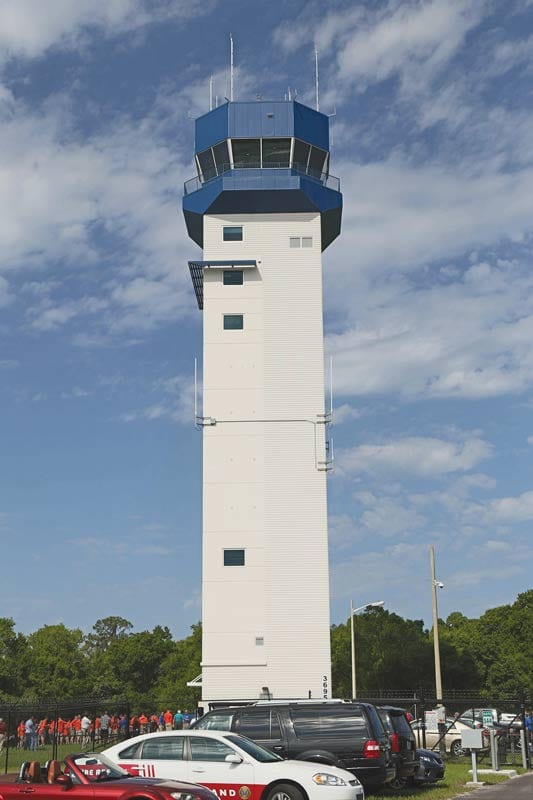![A Cessna 152 (By FlugKerl2 (Own work) [CC BY-SA 3.0 (http://creativecommons.org/licenses/by-sa/3.0)], via Wikimedia Commons](http://generalaviationnews.com/wp-content/uploads/2015/03/Cessna152-125x89.jpg)
The act of aviating is often a solitary endeavor. Or at least it appears to be.
In truth, there are many hands that go into making a safe flight happen. Certainly the pilot plays a pivotal role, but there are mechanics, and line-service personnel, parts manufacturers, administrators, and so many others who play a role.
A recent flight to meet an old friend for lunch really brought this into focus for me — in the best possible way.
I departed my home base and headed southwest for a landing at Lakeland Linder Regional Airport (KLAL), in the heart of central Florida.
Hallback’s Bar and Grill was the ultimate destination, where the BLTs have extra B, and everything on the menu makes my taste buds sing. Being able to grab a booth by the window overlooking the ramp is a pretty good draw, too. So off I went, happy as could be, for a short but very enlightening flight.
“Lakeland, Cessna 152UF, 12 miles northeast, inbound with Mike, full stop.” Everything was going beautifully and the scenery was as green and lush as it ever was.
“152UF report 3 mile final for Runway 27,” came the reply. I read back the clearance and continued on my merry way, only minutes from landing.
![A Cessna 152 (By FlugKerl2 (Own work) [CC BY-SA 3.0 (http://creativecommons.org/licenses/by-sa/3.0)], via Wikimedia Commons](http://generalaviationnews.com/wp-content/uploads/2015/03/Cessna152.jpg)
A Cessna 152 (By FlugKerl2 (Own work) [CC BY-SA 3.0, via Wikimedia Commons
The next radio call on the frequency was less productive. To be honest, it was little more than a blast of static, unreadable and somewhat irritating.
I’m guessing the aircraft’s radio transmissions had been problematic, but somewhat more clear earlier, because the tower called back with an N number to let the caller know the transmission was unreadable.
Another blast of static filled my headset. Another response from the tower, but this one included an assumption on the part of the tower controller. To paraphrase the call, I heard, “N12345, unreadable, but go ahead and enter a left downwind for Runway 27, you’re number 3 behind a Cessna on long final and a low-wing on downwind.”
The response was another blast of static, which the controller reported as unreadable, again.
I flew on, ever closer to the point where I’d make a position report. The issue with the radio didn’t bother me at all. In fact, it had nothing to do with me. I was aware of it, but I was flying solo in another airplane. I’d made good contact with the tower. My flight was going along fine.
What more was there to think about?
Then the story got interesting. The tower made a call to the errant radio owner: “N12345, it looks like you’re approaching Plant City Airport [8 miles to the west]. Did you want to land at Lakeland?”
An unreadable radio call was the response.
“N12345, unreadable. Ident if you want to land at Lakeland.”
I can only assume the pilot of the other aircraft pushed the ident button, based on the content of the next call from the tower. “12345, turn to a heading of 110. That will put you on a downwind for 27 at Lakeland….no, make that 090 for a left downwind to Runway 27 at Lakeland.”
I couldn’t have been more interested in the unfolding storyline if it had been a drama from the Columbia Broadcasting System during the Golden Age of Radio.
The tower controller recognized a pilot headed for his field had a problem. He found a solution for that problem and relayed it in a calm, supportive manner. And suddenly, the problem disappeared.
Let’s award a big point to the Lakeland Linder tower controller. He earned it, that’s for sure.

The new ATC tower at Lakeland-Linder Regional Airport.
Imagine yourself as a student pilot flying toward a controlled field, only to find out your radio isn’t transmitting your voice. What to do, what to do? How many of us would have thought to fly 500 feet above pattern altitude, circle the tower, and wait for light gun signals? How many of us even have a confident recollection of what those light gun signals are?
This is a great example of teamwork in action. That controller, by going out of his way to provide exceptional customer service to a pilot with a problem, may have done more than just ease the tension level in one pilot’s life and get them back home with less stress.
If the plane is based in Lakeland, and I assume that it is, the flight school that owns it will be able to make repairs and get it back on the line more quickly and less expensively than would have been possible with the airplane on the ground at a distant airport, with a bewildered student at the helm.
This is a customer service business we’re in, and that controller just gave us a fantastic lesson in how beneficial it can be to go the extra mile on behalf of our customers and co-workers.
Yes, we often feel like we’re engaged in a solitary endeavor when we fly. Some of us even seek that solitude out, flying low and slow in Class G airspace, enjoying the view and the freedom of movement our aerial steeds allow us.
But we’re only alone by choice. With a single radio call, we can be plugged back into the system and have all the support we need with the push of a button.
With that in mind, let’s make it a special point to remember our teammates, both seen and unseen, and honor the folks who make it possible for us to fly safely, affordably, and often.
We’ve got a great team to work with, all of us. And that includes you, too.
Source: http://generalaviationnews.comLet’s hear it for the team